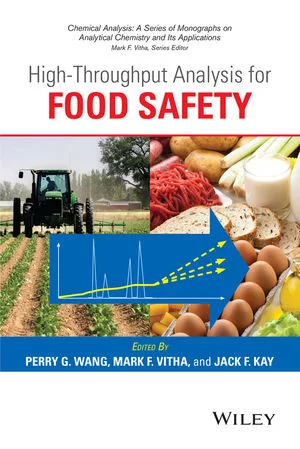Non-EPA Registered Cleaners and Sanitizers for Use in Food Production Facilities and Retail Food Establishments
Since 1972, when the Federal Insecticide, Fungicide and Rodenticide Act (FIFRA) underwent a major revision, and authority for its enforcement was given to the newly created Environmental Protection Agency (EPA), we relied on EPA registration numbers as an assurance that germicidal label claims were verified and that recommended use concentrations offered some degree of safety of chemicals that leave an active residual. We felt comfortable with these second- and third-party approaches to validation and the EPA registration number became the norm for the environmental health regulatory industry. So much so that we required all germicides used in foodservice and institutions to have a registration number on the label.
A dramatic change took place in the 1980s as a result of Earth Day awareness and other ecological events that touched our lives. We started seeing the development of new technologies that were both efficient and sustainable. They began carrying an “Environmentally Friendly” label as part of their new description and marketing strategy. Because of this ecological paradigm shift, President Clinton signed Executive Order 13101 in 1992 that defined “green cleaning” and mandated the use of “green” alternatives in lieu of traditional cleaning products—including disinfectants and sanitizers. Green cleaning was quite simply defined as “cleaning to protect health without harming the environment.” This definition implied the use of cleaning tools, chemicals, equipment and other products that have little impact on the environment, the user and building occupants.
The marketplace responded by introducing custodial products that contained neither toxic compounds nor persistent chemicals; additionally, they failed to demonstrate any damaging effects to the environment or user. For all good intents and purposes, these new technologies were indeed “green” in the truest sense of the meaning; most were well outside the scope of FIFRA-defined pesticide products and thereby qualified for an exemption to an EPA registration number. On the downside, these new technologies failed to make significant and immediate inroads into the food industry, partially due to their novelty, but more significantly, some of these new products could not be registered; they did not meet the criteria that required EPA approval. In short, these new products and technologies were not “pesticides” and did not require proof that they would not cause damage to the environment or were harmful to the user when used in accordance with label instructions.
Over the past several years, we are experiencing yet another evolution of the green movement through the emergence of chemical-free cleaning. Chemical-free cleaning is the epitome of “green.” It basically relies on water and includes such technologies as plain water that is used heated and/or under pressure; dry and wet steam; electrolyzed/engineered water and its non-toxic hypochlorous acid chemical adjuncts; hydrogen peroxide; and ozone. Other technologies that are equally friendly to the environment were also introduced into the food and institutional market. These include carbon dioxide, walnut shells, ultrasonic cleaning, enzymes, microfiber, ultraviolet light and such novel advancements as self-cleaning surfaces, to name just a few of today’s unique offerings. Interestingly, none of the newest sanitizing technologies or non-toxic janitorial products comes under the rubric of FIFRA. There is no EPA registration number required for them. For definitive information on the details of these regulations, see the following references: Pesticide Registration Manual - Chapter 13 - Devices and 40 CFR 152.500 - Devices.
Even though some of the new cleaning technologies may be exempt, EPA is not totally out of the picture. Regardless how benign a product or technology is, if a microbiological-kill claim is made, that product or technology is required to have an EPA-assigned establishment number, as opposed to a registration number. The establishment number is required by any businesses that produce pesticides, active ingredients or devices, including companies or establishments that import into the United States. In the context of this article, “devices” is the operative word. EPA further requires companies that manufacture and/or distribute these devices to file an initial and an annual production report. Although a registration is not required, devices are regulated in that “false or misleading claims” cannot be made about their effectiveness. If a manufacturer is making claims about a device, they are required to have scientific data to back up those claims. These data do not have to follow the methodology or format required under registration. Examples of devices that are regulated in this way include ultraviolet light units used for water purification; any water treatment device used to reduce or eliminate microorganisms from water, including electrolysis and ozone units; and air treatment units designed to reduce or eliminate microorganisms or allergens. To reemphasize, these EPA-regulated devices do not include registration.
Even though we are given assurances that new technologies and solutions are exempt, there are still concerns that have to be addressed. Customers want to know if there is a reliable equivalency to EPA registration. And if so, how can these non-toxic product and device claims be validated, and user safety assured? The answer has been around for 69 years.
Founded in 1944, NSF International is an independent, not-for-profit organization that is a leading American National Standards Institute -accredited developer of more than 50 American National Standards that protect public health and the environment. In addition to standards development, the NSF headquarters in Ann Arbor, MI offers a full array of laboratory capabilities for product certification against these and other industry standards. Their capabilities include verifying manufacturers’ claims and substantiate product performance. Products that meet these standards bear the NSF mark, which is respected by consumers, manufacturers, retailers and regulatory agencies at the local, state, federal and international levels.
As part of their standards activities, NSF also develops protocols for unique and new technologies, including consumer products. Protocols are specifically designed to address consumers’ public health, safety, performance and efficacy concerns. The protocols are every bit as rigorous as their American National Standards counterparts, except that they are targeted to individual products or those products with a limited market, but that nonetheless require a rigorous review and certification.
An NSF protocol written for EPA-exempt products, describes the requirements for the safety and effectiveness of the devices and their applicability to produce a cleaner and sanitizer or a sanitizing method (in the case of steam) that could be used as a substitute for chemical sanitizers on food contact surfaces. The protocol assumes that the cleaner and sanitizer solution produced by the device is used immediately, or within a 24-hour period.
In the scope of the protocol, the methods described are intended to provide safety and testing requirements as well as acceptance criteria to certify that the sanitizer or sanitizing method created by the device is safe and effective for use on food contact surfaces. It further sets forth laboratory criteria to demonstrate that the sanitizer or sanitizing method meet testing requirements consistent with sanitizers in commercial food service operations.
The protocol sets forth several key elements:
• Material requirements that ensure the device is made of substances suitable for use in food establishments and designed to promote cleanability
• Labeling and product information requirements to ensure that operating instructions are clear and legible; that the instructions and device yield a suitable sanitizer or sanitizing method; and that the product labels meet applicable EPA labeling requirements
• Testing criteria that demonstrate that the concentrations of active ingredients in the sanitizer solution achieve the active ingredient requirements in the FDA Food Code, and that the sanitizer or sanitizing method kills microorganisms at rates established by EPA and specified in the Food Code
The protocols incorporate normative references that include, but are not limited to, all existing laws, codes, regulations and standards that are applicable to the device; it ensures conformance to these conventions. In summary, FIFRA-exempt “pesticide” devices that produce sanitizing solutions or deliver sanitizing methods can now be certified to NSF protocol criteria that are equal to, and in many cases more rigorous than those specified by the EPA.
Earlier this year, NSF developed and published a protocol for a newly developed cleaning and sanitizing device. The completed protocol was vetted by industry, regulatory and user experts and critically reviewed by the NSF Council of Public Health Consultants. Known as NSF Protocol P423: Electrochemically Activated Water Cleaning and Sanitizing Devices in Commercial Food Operations, it specifies the materials in its construction to ensure that no toxic products are released; it provides the requirements for its design and construction to ensure general sanitation and electrical safety of the device; it details the labeling and product information requirements, including the necessary information that appears in the operation and instruction manual; and most importantly for the customer, the protocol details performance criteria. In this specific protocol, the performance criteria are based on Section 4-501.114 of the 2009 FDA Food Code. It mandates that the device repeatedly demonstrates and meets specific characteristics of freely available chlorine as specified in the Code. Along with performance specifications, NSF developed a test procedure to evaluate sanitizer production and efficacy. Finally, the protocol lists the acceptance criteria that the device must undergo, including rigorous in situ testing requirements, in order for the device to bear the NSF mark.
Also in development is a protocol for portable steam cleaning equipment designed for use in foodservice, particularly for rapid sanitation of deli slicers and vegetable choppers. It follows the same format as the one mentioned above. However, it will also include a surface microbiological reduction challenge test and criteria for the various steam and chemical dispensing accessories and appliances that may come with the device, as well as the performance criteria for a vacuum unit that may be integral to the steam cleaning unit. As with all NSF protocols and standards, the focus is on public health and safety, with emphasis on performance and efficacy. For more information on protocol development, visit NSF Engineering and Research Services at www.nsf.org.
The NSF protocol development and certification process, along with their product listing, provides continuity of validation for the manufacturer to the consumer. Their program fills in the gap where regulation leaves off, providing assurance to the consumer and regulator that a regulation-exempt product undergoes the same, if not greater scrutiny as with a governmental agency. The rigors of the protocol development program set the criteria by which non-pesticide disinfectants and sanitizers, and non-toxic cleaners and methods can be validated. This program is designed to provide assurance to the consumer that the new “green” technologies and products are effective and safe to use, and that they meet all applicable public health and safety standards.
.jpg) Forensic sanitarian Robert W. Powitz, Ph.D., M.P.H., R.S., C.F.S.P., is principal consultant and technical director of Old Saybrook, CT–based R.W. Powitz & Associates, a professional corporation of forensic sanitarians who specialize in environmental and public health litigation support services to law firms, insurance companies, governmental agencies and industry. For more than 12 years, he was the director of environmental health and safety for Wayne State University in Detroit, MI, where he continues to hold the academic rank of adjunct professor in the College of Engineering. He also served as director of biological safety and environment for the U.S. Department of Agriculture at the Plum Island Animal Disease Center at Orient Point, NY. Among his honors, Powitz has received the NSF/NEHA Walter F. Snyder Award for achievement in attaining environmental quality and the AAS Davis Calvin Wagner Award for excellence as a sanitarian and advancing public health practice. He is the first to hold the title of Diplomate Laureate in the American Academy of Sanitarians and is a diplomate in the American Academy of Certified Consultants and Experts and with the American Board of Forensic Engineering and Technology. Dr. Powitz can be reached at Powitz@sanitarian.com or through his website at www.sanitarian.com.
Forensic sanitarian Robert W. Powitz, Ph.D., M.P.H., R.S., C.F.S.P., is principal consultant and technical director of Old Saybrook, CT–based R.W. Powitz & Associates, a professional corporation of forensic sanitarians who specialize in environmental and public health litigation support services to law firms, insurance companies, governmental agencies and industry. For more than 12 years, he was the director of environmental health and safety for Wayne State University in Detroit, MI, where he continues to hold the academic rank of adjunct professor in the College of Engineering. He also served as director of biological safety and environment for the U.S. Department of Agriculture at the Plum Island Animal Disease Center at Orient Point, NY. Among his honors, Powitz has received the NSF/NEHA Walter F. Snyder Award for achievement in attaining environmental quality and the AAS Davis Calvin Wagner Award for excellence as a sanitarian and advancing public health practice. He is the first to hold the title of Diplomate Laureate in the American Academy of Sanitarians and is a diplomate in the American Academy of Certified Consultants and Experts and with the American Board of Forensic Engineering and Technology. Dr. Powitz can be reached at Powitz@sanitarian.com or through his website at www.sanitarian.com.
Looking for quick answers on food safety topics?
Try Ask FSM, our new smart AI search tool.
Ask FSM →







